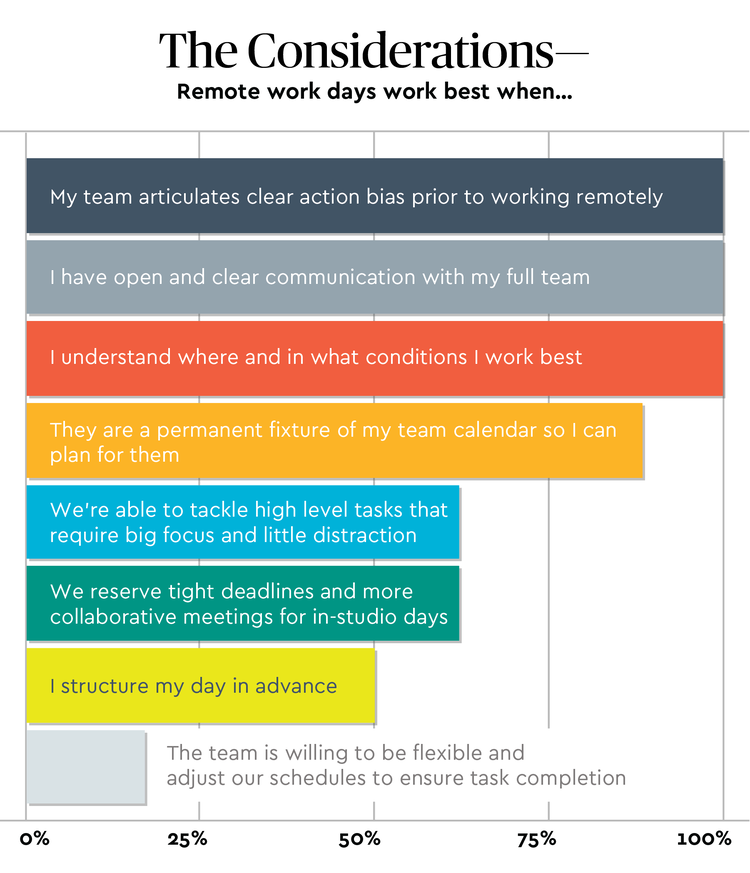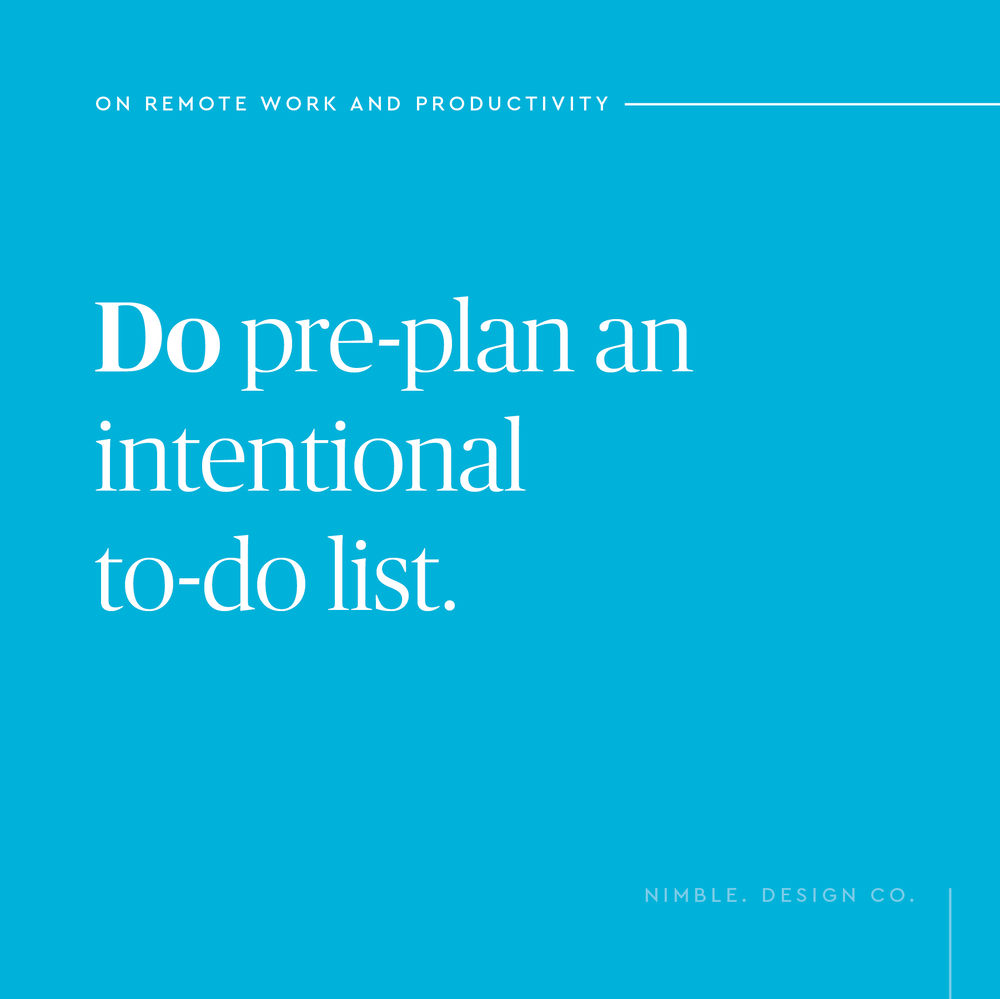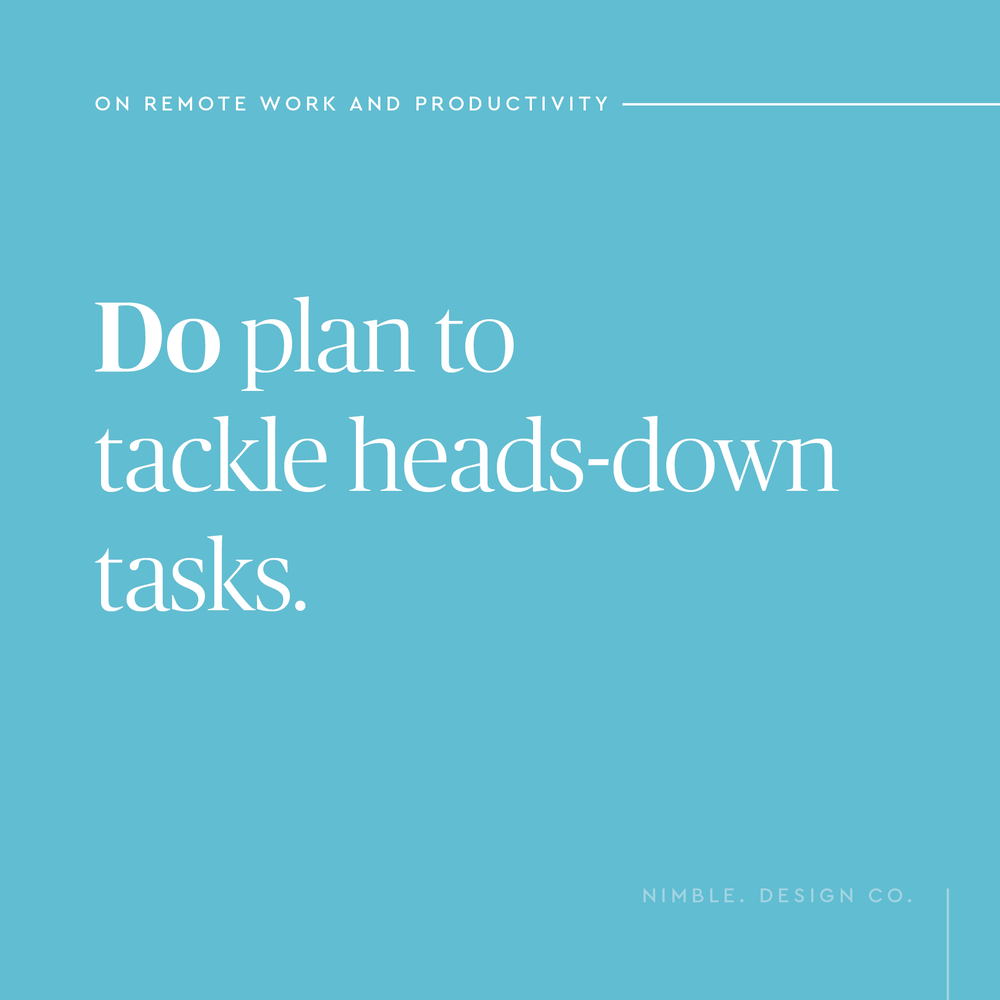On Remote Work and Productivity, Part Two
School’s back in session and we’re (finally) settling back into our studio routine. Summer came and went in a flash, memory-rich and story-full. Between site visits and inspiration resets, professional development travel and what just felt sporadic ‘go, go, go’, we’re all thankful fall (and its cooler temps) is ahead. Before the wave of summer, we announced we were putting ourselves to the test — pushing our team to track active reflections on the ‘pros and considerations’ of remote work as it relates to personal productivity [through monthly planned remote time, coined #nimbleelsewhere at Nimble].
Our findings are in and, spoiler alert — we think you’d be crazy not to read on! Missed ‘part one’? 👉 Learn more about Nimble. Elsewhere here.
02. Our Goal
To uncover, extract and share factual, raw data points to pinpoint the pros and considerations for incorporating remote time into the workplace.
01. The Experiment
Actively surveying the Nimble. team over the past four summer months to document Nimble. Elsewhere planning, routines and experiences in order to get to the core of the popular workplace debate — remote work vs. productivity.
03. Our Findings
We hope these insights help answer your curiosities, ease your anxieties and ignite your bravery to try out planned remote time for your team(s) as well!
Reflections were individually recorded at the end of each Nimble. Elsewhere day (4 days in total) and summarized at the end of the summer by an unbiased source. Highlights, survey totals and live quotes were extracted and prepared for the purpose of openly sharing here, with you.
Without further ado–
How Planned Remote Time Factually Benefits Small Teams
(from the raw minds and off-site hearts of the Nimble. team) (1)
(1) Gathered and summarized data insights from 100% participation by the Nimble. team.
01.
If you haven’t already honed your internal protocol to establish clear communication expectations, start there. Having a protocol lends well to establishing where to look [for active communication and to-do’s] on remote days. Some companies are even generating acronyms, like “Four Hour Response (4HR)” and “No Need to Respond (NNTR)” to heighten predictability in digital conversations. Slack, Dropbox Paper, Google Docs — there are so many options out there to utilize. Just remember that word choice, grammar and punctuation are key contributors to delivering an intended sentiment in the absence of body language!
–
At Nimble., our team has grown to embrace Slack for all internal-facing communication (email is reserved for external communication, period). We’ve become fans of both the ‘set status’ and the Outlook calendar integration on Slack – these simple visual cues help to create transparency and boundaries for team members in respecting when we’re ‘on’ or ‘away’. We also share projected whereabouts in advance of remote day so we’re clear on availability for communications and/or reviews.
02.
The week of your planned remote time, connect with your team to establish clear goals and action bias. Ensure each team member understands not only their own to-do list, but also what their peers strive to tackle while working remotely. Speak openly about pre-existing plans — is someone venturing offline for a planned lunch date at 1pm? Is someone jumping on a flight in the morning?
When tasks are completed — celebrate and let your team know! Keep the team posted and engaged.
—
We’ve identified for Nimble., remote time is most effective for heads-down tasks. Design reviews are less productive when we’re not all present in the same room delivering feedback and receiving verbal and visual communication together. So, we reserve design reviews for studio time only.
Find what works, what doesn’t work and always remember to reflect and mold often.
03.
Do yourself a favor and spend 15 minutes today watching, ‘Why Work Doesn’t Happen at Work’ by Jason Fried on the TED stage. Raw and truthful – right? Remote work days provide the freedom to either find a space that suits you most, or to move around between environments over the course of the day. If you love working around people with steady white noise, a coffee shop might be calling your name. If you prefer complete focus and a controlled environment, your living room couch or porch swing might prove to be your most productive workspace.
—
Regardless of where your do your best work daily, it’s important to notice and understand why factors like light, comfort, temperature, and sound contribute to getting work done. At Nimble., we found that our team craves natural light, controlled noise, space to spread out and ample tech (read: steady and fast wi-fi) to feel highly productive. Locale can change but these essentials ranked as critical need.
What are your workspace essentials?
04.
We all do it — start our week with the mindset to begin fresh and finish strong. But, inevitably those ‘M&M’s’ (see 08:25 of this video) creep in and all of the sudden our Monday to-do’s become our Friday focus items and we recycle that hopeful to-do list for the week ahead.
—
If reserving remote days helps you tackle your overwhelming to-do list by simply providing the time and space to make it happen — great! This is a good opportunity to plan your time ahead [and wisely] to get back on track!
Give yourself the space to make your task list happen and avoid voluntary distractions.
05.
Understanding where your personality tips on the introvert–extrovert spectrum can make a difference in how you effectively schedule your week. We all understand that introverts get energy from finding time alone to recharge, while extroverts draw energy from being around others. Side note: if you haven’t watched Susan Cain’s ‘The Power of Introverts’ talk, do this now.
—
It’s a simple concept but an important one to understand when applied to the workplace. For instance, it might behoove an extrovert to start their day with meetings and calls to boost energy, while introverts might consider scheduling interactions towards end of the day after completing individual focus tasks.
If you’re not sure where you tip on the scale, here are a couple of great personality tests for open share and active discussion with your team:
And for our creative fellows, My Creative Type
Weigh in with your opinion on remote work and productivity for small teams.
Join us on social with your perspective – or questions.
This is the ninth edition of our series, Nimble. on Record. Thank you for reading!
For questions or to add to the conversation, contact Candice Riley Campbell, candice@nimbledesignco.com | 404.445.3400








